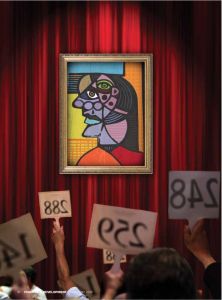
Article
The Art of Money Laundering
The loosely regulated art market is rife with opportunities for washing illicit cash
IMF,
2019
Read or listen offline
Amazon Kindle
auto-generated audio
1×
Log in to listen to the audio summary.
auto-generated audio
Recommendation
Because the market for fine art and antiquities is secretive and largely unsupervised, it is a haven in which criminals can easily launder their ill-gotten gains – to the tune of an estimated $3 billion in 2018. In this concise and illuminating article, journalist Tom Mashberg paints a colorful picture of what is largely the last unregulated financial market in the world.
Summary
About the Author
Tom Mashberg is a syndicated journalist who writes about crimes in art and rare artifacts.
















Comment on this summary